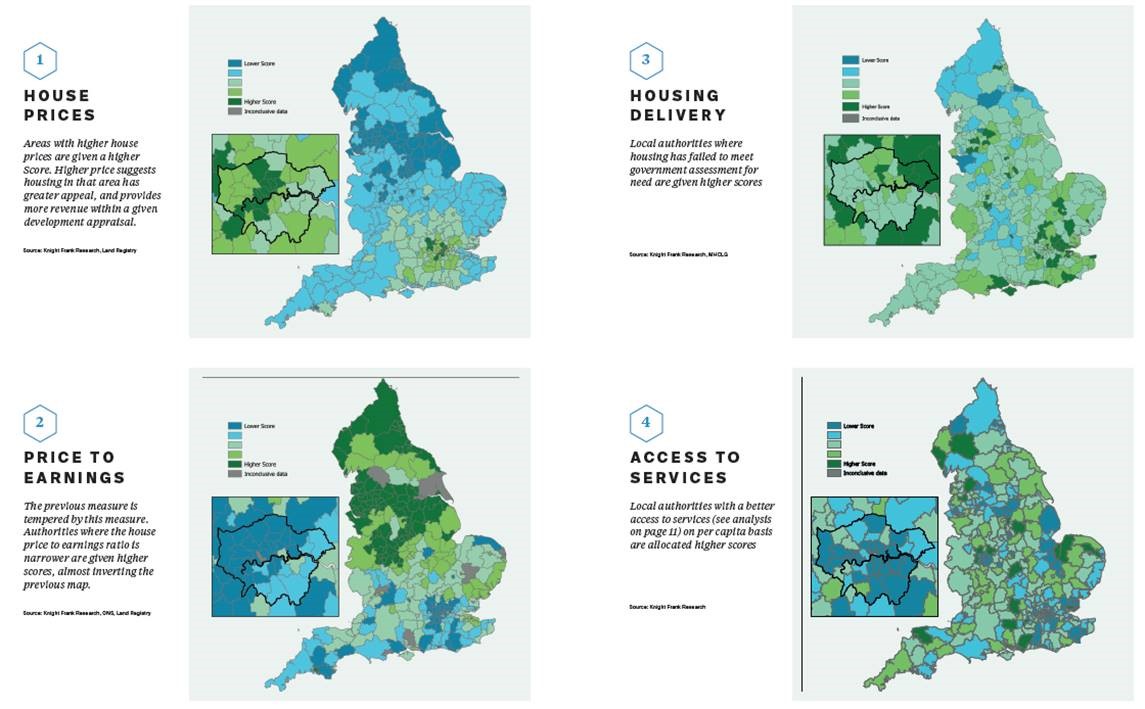Where should you buy UK development land?
The process of buying land can be fraught with uncertainty. Developers will often favour regions they are familiar with, but comprehensive analysis of a string of data points can tease out differences between neighbouring local authorities that aren’t apparent at first glance.
2 minutes to read
The backdrop to our 2020 Knight Frank Development Opportunities report has been one of uncertainty. Coronavirus has undoubtedly disrupted the market. Whilst housebuilders are now returning and bidding for land, margins have been raised which is affecting what many are prepared to pay, and site selection is increasingly selective.
Identifying the right sites, in the right places is key. With this in mind, we have created a bespoke model – taking advantage of data and geospatial techniques – to combine the most sustainable places to build houses with the best places to live. Perhaps these are areas for housebuilders to focus on over the coming years.
By ranking every Local Authority in the UK against this economic and housing criteria – including pricing, liveability, accessibility, housing supply and housing demand, we have identified five potential hotspots for future growth.
The areas are Surrey Heath, Tameside, East Hertfordshire, Fareham, and Chesterfield. More detail on these areas can be found in the report.

Covid-19 has prompted a shift towards people moving to the country, and finding the right balance between home and office working is set to become more prevalent even after the pandemic. Perhaps then it is no coincidence that the areas highlighted offer a balance between rurality and connectivity; they are places where local communities can thrive, whilst also being close enough to access nearby cities.
This talks to the new balance between town and country, and the rise of walkable mixed-use communities – whether that be an urban or a rural village. As demand for new housing continues to grow, identifying those areas which already deliver on a number of key criteria – including infrastructure, schools, and amenities – means housing delivery should be more efficient and more sustainable.

Charlie Dugdale, a Partner in the Land Agency and Consultancy team at Knight Frank, explained: “A recent report by the Building Better, Building Beautiful Commission recommended a new framework that ensures we’re building the right development in the right place. What this new research shows is how we might start to use geospatial technology to identify the most sustainable locations for future development.
“This method is focussed on an ambition to stimulate sustainable developments. Walkable mixed-use neighbourhoods remain the Holy Grail – developments that support livelihoods as well as living – particularly in a world where living trends have been affected by the Covid-19 pandemic.”
Stuart Baillie, Head of Planning at Knight Frank, added: “We are not suggesting that securing planning in these areas is going to be straightforward. Each of these areas has ‘protect’ characteristics in the context of existing green belt, heritage and ecology considerations – but that is precisely what makes them attractive places to live. Land owners and developers will need to work in partnership with Local Planning Authorities to achieve a balance of high quality and viable schemes that complement yet contribute towards the longer term sustainability of these areas via ‘good growth’.”